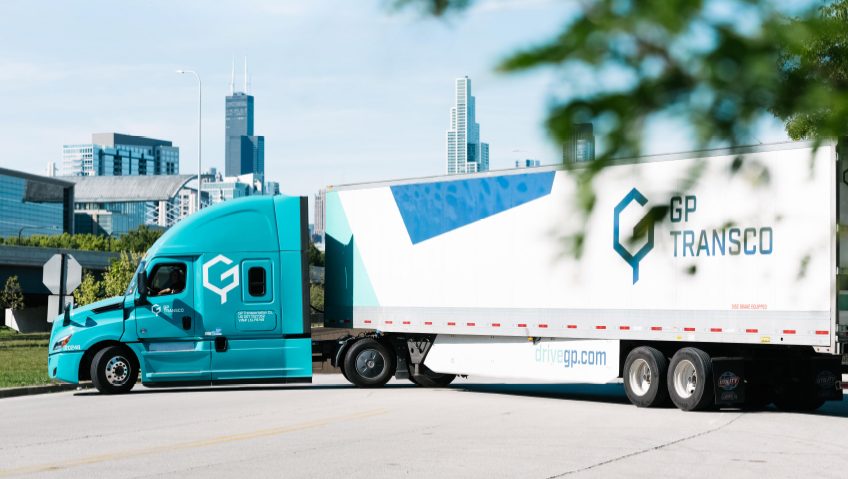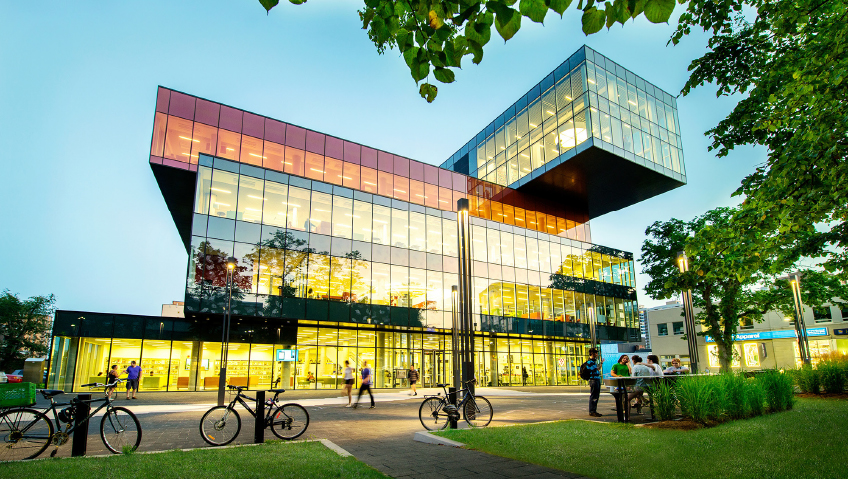Driving distances akin to thirty-eight trips around the planet every week while carrying four billion pounds of product annually, GP Transco is a North American trucking leader that operates in a league of its own. Alongside its commitment to working with integrity and with its sights set on hauling over 69,000 loads of freight in 2022, this trucking firm is dedicated to transparency.
GP Transco comes to market with a fresh approach to trucking. In an industry known for being slow to embrace change, its commitments to technological advancement, honesty, and punctuality reap tremendous benefits for its drivers and clients. Plus, as it owns more than three-quarters of its fleet, the firm has complete control over where its trucks go and when.
For most of its drivers, driving for GP Transco is such a pleasure that the company has earned the 2020, 2021, and 2022 Best Trucking Company to Work For Award from Smart Trucking, a news and information site for the trucking industry. Safety comes first and the company spares no expense to ensure that its trucks are equipped with the smartest technology available.
Thanks to leaders with such diverse backgrounds as aviation, finance, and IT, GP Transco has assembled a collection of practices unique to this company and to the industry as a whole. In addition, the firm runs its business in a way that secures consistent pay for drivers, which has translated into high driver tenure.
It is headquartered in Joliet, Illinois, with a second office in Carson, California and has been featured on Inc. 5000 for five years, taking the 4,334th spot late last year. This follows its superb performance and a 65 percent growth rate for 2021. GP Transco also made Crain’s Fast 50 for four consecutive years, achieving the fortieth position last year. It also featured in first place on truckdriverssalary.com for offering the best remuneration packages, benefits, and driver satisfaction in the industry. Moreover, it was rated one of Chicago’s Top Workplaces by the Chicago Tribune – a recognition that is nearly unheard of in the trucking industry.
“That’s uncommon for trucking companies. A big part of it is because we are so transparent with our drivers,” says Sergey Bort, Vice President of Marketing and Strategic Business Development. This naturally resulted in securing a pool of drivers that is among the best in the industry. Open communication and ample support establish relationships of trust between management and the drivers, who are considered in everything the company does right down to its marketing campaigns.
The company came to life in 2006 when President Gedas Poviliunas, who was working toward a finance major at the time, put two trucks on the road. Just over a decade later, he was joined by its Chief Executive Officer Dominic Zastarskis and Executive Vice President Amos Savickas when the company merged with ZA Transport in 2015.
The company’s unique offering lies in its combination of state-of-the-art services and great relationships. It includes automatic load status updates, historical load data, fleet safety artificial intelligence, route optimization, one-point customer contact, advance load planning, sitting truck alerts, and much more.
Today, it is the proud owner of a signature fleet, consisting mostly of Daimler Freightliner Cascadia semi-trucks branded in a stylish shade of teal. Despite each truck being completely kitted out with impressive safety features like collision prevention systems and tailgating notifications, the company goes above and beyond to equip each vehicle with additional technology to further enhance driver and cargo safety as well as overall comfort.
“The biggest part is really treating your drivers with respect. Trucking companies are… known for not being super transparent or respectful toward their truck drivers. We… try to turn that around by really talking to our drivers as much as we can about their preferences. We know that when you have happier employees that are well compensated, they tend to perform better and tend to be more enthusiastic about driving safer, in a fuel-efficient manner. It all feeds into one another,” says Bort.
“Technology done in a good way while being communicated to your [team] in an honest way is key to having a fleet that is as safe as possible,” he adds. The company’s striving toward continuous improvement also drives its ecological responsibility. Trucks are fitted with electric power units (EPU) to ensure that overall gas emissions are significantly lowered by cutting down on idling time. The power units allow for the same comfort levels in the air-conditioned driver cabins while saving fuel.
Technology plays a big part in the company’s efficiency, and to achieve optimum performance of its trucking management system, the firm hired its own development team to create functional software that is sophisticated yet simple to navigate. The subsequent OpenRoad TMS management system helps track and match vehicles with clients while handling geotagging, tracking, notifications, fuel consumption, and more, easily and efficiently. This cloud-based tool has brought about a shift from the old way of doing things where clients would often call drivers to track their progress only to slow delivery and distract the driver from his or her driving.
The program augments each vehicle’s running time while automating administration tasks like invoicing, maintenance tracking, and fuel consumption management. It also provides real-time feedback on driver and fleet manager performance. OpenRoad TMS was tested and improved over half a decade to attain nearly perfect overall efficiency.
“At GP Transco we like to be early adopters of a lot of the different technologies that allow us to prevent incidents from happening,” says Bort. One such partner is based in California. Technology leader Samsara developed an electronic logging device (ELD) that is far ahead of the standard cloud-based programs and hardware originally mandated by the government in 2017. Unlike when drivers had to keep handwritten logbooks of their travel distances and hours, the device now takes care of recording the details. Before this technology, “drivers could keep multiple logs if they wanted to earn more or the companies would push them harder to make more money. The result was drivers who were exhausted and truck companies taking advantage of drivers, and therefore, it wasn’t safe for them to drive,” says Bort.
As those in the industry know, ELD systems now capture travel information automatically and cannot be faked or changed. GP Transco started installing Samsara’s enhanced version of ELD technology in 2015, since which time the product’s functionality has improved even further. Among its newer features are driver-facing cameras, so each of the company’s trucks is fitted with two cameras – one facing the road ahead and one recording the driver.
Driver-facing cameras are not mandatory and come with an earnings incentive for those who choose to include them in their cabs. “As far as I know, we’re the only company that makes these cameras optional and pays drivers for having them as opposed to just making them mandatory,” says Bort, also pointing out that drivers tend to accept the offer due to the transparency provided by the company. These cameras do not deliver live feeds but are rather activated by actions such as sharp braking or harsh turns, alerting the company’s safety team which then checks on drivers to confirm their safety and offer support if needed.
A three-dimensional scanner inside each camera also detects head motion which, in turn, alerts the safety team of dangerous behaviors such as engaging with a mobile phone or nodding off while driving. Reports are assessed to establish a course of action to avert and avoid road incidents by alerting the driver to self-correct.
“These [technologies] are cool because it combines instant notification of our safety staff with privacy because these are not systems that are constantly recording the driver. So you get the best of both worlds,” Bort says.
These capable professionals using top-quality software have resulted in many potentially serious incidents being averted. In the unfortunate event of an incident that leads to litigation, the footage can prove drivers’ innocence, further safeguarding its teams. The company’s safety managers each handle around fifty drivers, keeping them safe while helping to ensure that goods arrive on schedule. Currently, the company moves, on average, about 20 percent consumer goods, 30 percent appliances and electronics, 25 percent paper and packaging, 20 percent tools and automotive products, and 5 percent food and beverages.
In 2020, the company proudly inaugurated its modern forty-thousand-square-foot facility, which is now the headquarters of the operation. This site includes 24-hour access to amenities like a basketball court and gym, showers, vending areas, full kitchen, laundry room, several lounge areas for drivers, and ample space for a maintenance department that ensures full safety code and standards compliance at all times. There is also enough space for its plus-sized fleet of 520 semi-trucks and over 700 trailers.
This has been great for growth, helping the company go from a ratio of 72 percent owner-operators in 2018 to 75 percent company drivers in 2020. Today, over 85 percent of GP Transco drivers are company drivers. GP Transco is also acutely aware of the vast number of older drivers retiring from the industry. For this reason, its marketing department is focused on pitching to a younger yet experienced driver demographic that appreciates the use of modern technology.
Amid huge market shifts, the company continues to cultivate an open mind and a keen eye for quality mobile applications with built-in document scanners and other technology to keep it performing at its best. “It makes [our drivers’] life so much easier. The more of these redundant, annoying tasks you take away from drivers, the safer they end up being because when you’re doing something as serious as pulling 40,000 pounds worth of freight, the fewer things that you have to concentrate on… the better. There are so many studies showing that multitasking is kind of a joke, no matter who you are. It’s like [being] a pilot. You need somebody fresh, without thirty things on their mind that they have to keep a close list on,” Bort says.
The intense supply chain pressure may not yet be a thing of the past. However, GP Transco is riding the crest of sustainable, steadfast growth and will continue to benefit its clients and its drivers as best it can. With this goal, it has its eye set on doubling its fleet over the next five years.
COVID-related increases in haulage demand continue to benefit trucking firms, so its continued reinvestment will stand the company in good stead in years to come. Considering that the trucking industry moves most of all the country’s consumables and commodities, GP Transco is committed to improving the industry’s overall image.
“COVID woke people up. They looked at empty shelves and started asking ‘who is replenishing this stock?’ At the end of the day, it is truck drivers doing it,” Bort says, relating the privilege the company had to collect 600,000 pounds of medical supplies from an airplane with twenty-four trucks within twenty-four hours, one of many COVID-related projects the company has completed over the past two years. “It was a really good way of showing people not to take this safety net infrastructure [and truck drivers] that we have in place for granted,” he adds.






